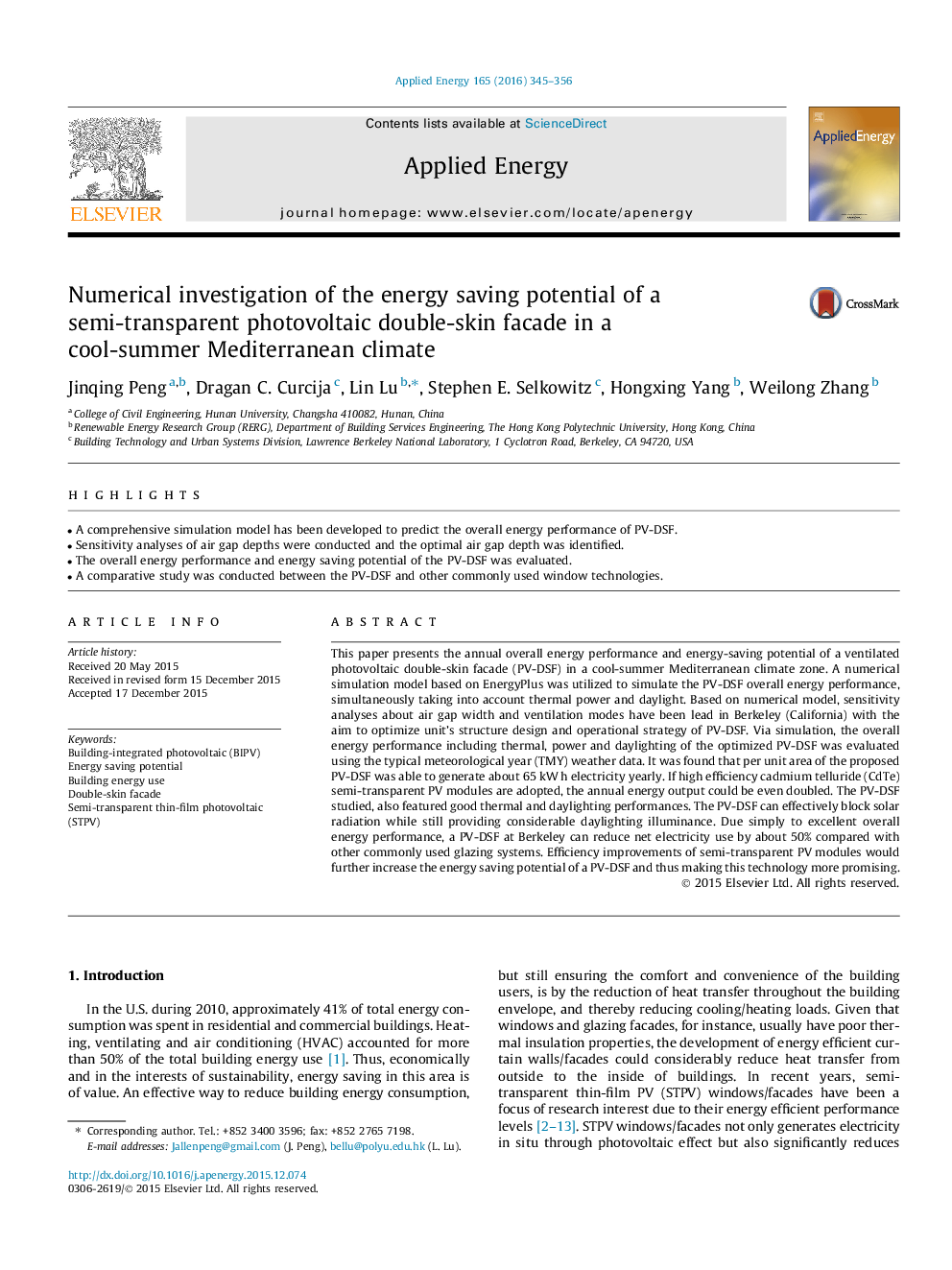| Article ID | Journal | Published Year | Pages | File Type |
|---|---|---|---|---|
| 6683968 | Applied Energy | 2016 | 12 Pages |
Abstract
This paper presents the annual overall energy performance and energy-saving potential of a ventilated photovoltaic double-skin facade (PV-DSF) in a cool-summer Mediterranean climate zone. A numerical simulation model based on EnergyPlus was utilized to simulate the PV-DSF overall energy performance, simultaneously taking into account thermal power and daylight. Based on numerical model, sensitivity analyses about air gap width and ventilation modes have been lead in Berkeley (California) with the aim to optimize unit's structure design and operational strategy of PV-DSF. Via simulation, the overall energy performance including thermal, power and daylighting of the optimized PV-DSF was evaluated using the typical meteorological year (TMY) weather data. It was found that per unit area of the proposed PV-DSF was able to generate about 65Â kWÂ h electricity yearly. If high efficiency cadmium telluride (CdTe) semi-transparent PV modules are adopted, the annual energy output could be even doubled. The PV-DSF studied, also featured good thermal and daylighting performances. The PV-DSF can effectively block solar radiation while still providing considerable daylighting illuminance. Due simply to excellent overall energy performance, a PV-DSF at Berkeley can reduce net electricity use by about 50% compared with other commonly used glazing systems. Efficiency improvements of semi-transparent PV modules would further increase the energy saving potential of a PV-DSF and thus making this technology more promising.
Keywords
Related Topics
Physical Sciences and Engineering
Energy
Energy Engineering and Power Technology
Authors
Jinqing Peng, Dragan C. Curcija, Lin Lu, Stephen E. Selkowitz, Hongxing Yang, Weilong Zhang,
